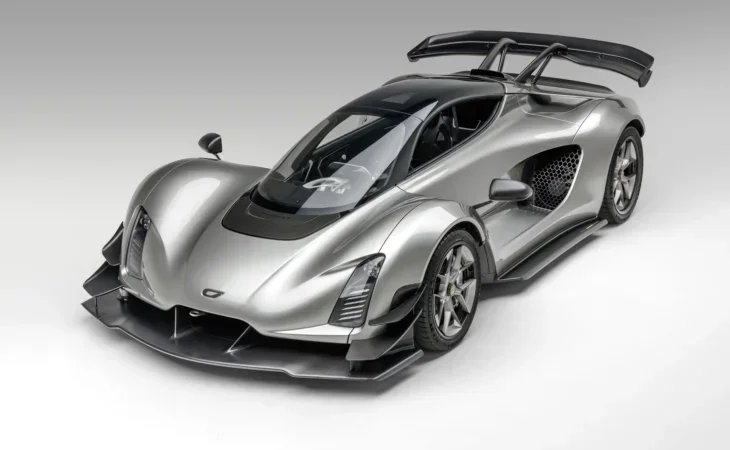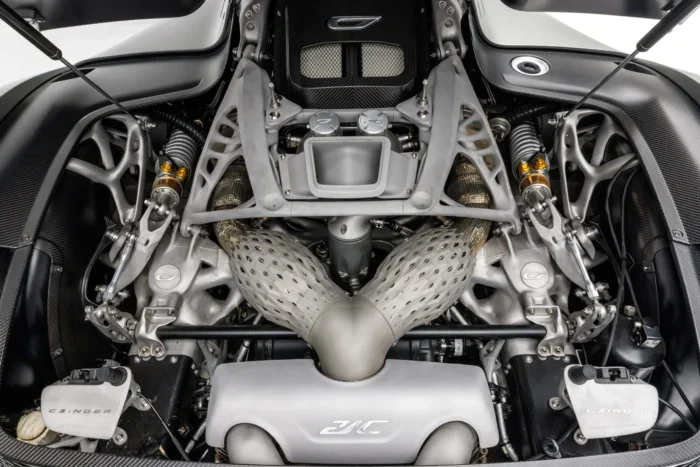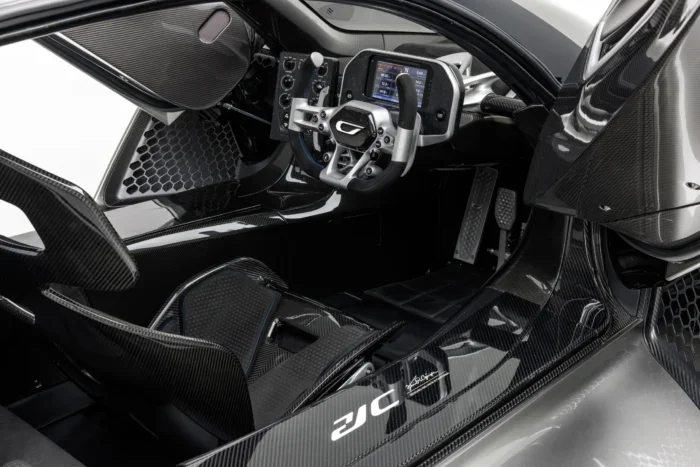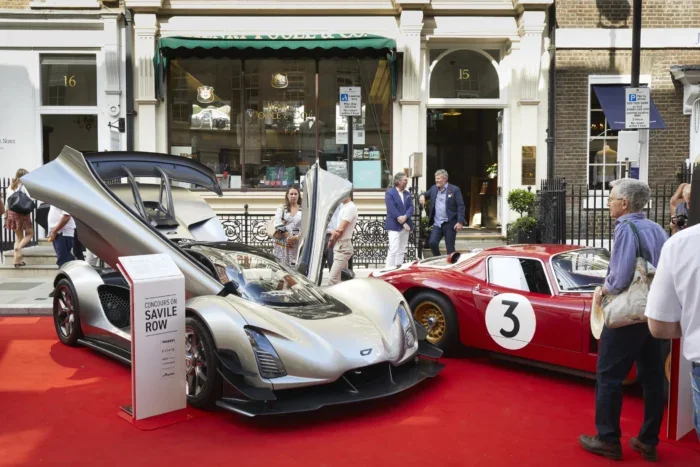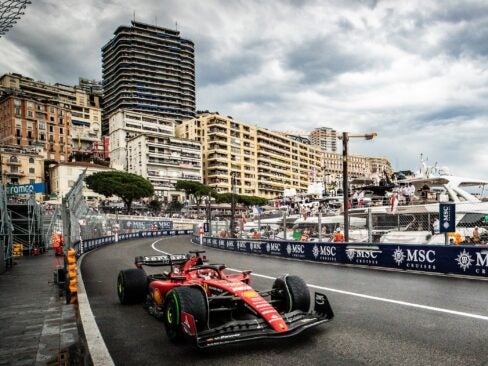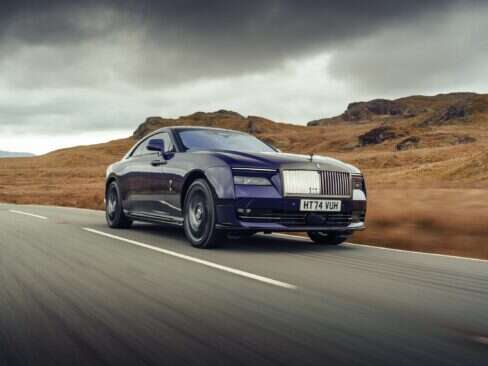Traditionally, the automotive industry is one of the hardest for new start-ups to survive. Dominated by behemoths like the VW group, newcomers must burst onto the scene with bold innovation and breathtaking statistics if they hope to turn heads away from the giants. Think how Tesla skyrocketed to success in the 2010s to become the world’s largest electric vehicle producer. Czinger, founded in 2019, has taken the punt and is gaining the attention it needs to survive.
Its first vehicle — the 21C — is certainly ruffling some feathers. It has just broken the production car track record at the iconic Circuit of the Americas and Laguna Seca in the US, taking the crown from the McLaren P1 and McLaren Senna. There is also a plan brewing for a European track tour where it will likely continue to top leaderboards.
The Czinger 21C is special for numerous reasons, but ultimately, it’s the striking visuals that set it apart from its competitors. Distinctive lines, subtle curves and aggressive details — like the razor-sharp front splitter — are not there purely for aesthetics. Each of the 21C’s visual quirks serve an aerodynamic purpose.
On June 15, the Czinger 21C made its UK debut where it was displayed to the public as part of the Concourse on Savile Row event. Elite Traveler was invited to talk all things 21C with co-founder and senior vice president of operations, Lukas Czinger.
Czinger 21C: a car unlike any other
The 21C took a different path from the very beginning. It would be impossible to list every new idea that Czinger has brought to the table, however, the initial design phase caused Czinger to register 350 patents. This was followed by a re-design that involved a further 100 new patents. “This car was made unlike any other,” says Lukas Czinger.
“The chassis is fully 3D printed and designed using AI, it’s assembled on a new manufacturing system that’s creating a whole different level of performance,” he adds. As the world’s first 3D printed hypercar, the 21C is forging an innovative path and breaking ground in the automotive industry.
“For collectors and enthusiasts, the 21C is going to represent a fundamental shift. From the initial design to production, the 21C represents a transition, which in my mind, is as big of a transition as the Ford assembly line was for the industry 100 years ago.”
Under the hood — or trunk, which is where the twin-turbo V8 engine is actually located — the 21C does not disappoint. The hybrid engine produces 1,250hp and is capable of accelerating to 62mph in 1.9s.
This rapid acceleration is in part thanks to the 300hp electric front axle that’s capable of torque vectoring. In short, this is when a computer-controlled system effectively manages how much power each wheel gets, optimizing grip when driving fast or in difficult conditions and ensuring maximum performance.
The design of the Czinger 21C
“Just look at the car,” says Czinger “It’s strikingly different.” At the event on Savile Row in Mayfair, the 21C was lined up next to classic and modern supercars. Bright red Ferraris, McLarens and Aston Martins lit up the red carpet. The 21C held its own and was constantly surrounded by a throng of people. Its unusual shape was one of the main drivers of this interest.
“Our seating arrangement is unlike anyone else in the industry, we’re really the first to look at this one plus one seating for a street-legal car,” says Czinger. On first glance the 21C looks like a single seater, but there is a passenger seat located directly behind the driver. “This allows a narrow cockpit shape, it’s very fighter jet-inspired,” adds Czinger.
Aside from looking the part this one plus one seating style comes with some huge benefits. “We were able to reduce the frontal surface area of the windscreen and add wider fender flares for downforce,” says Czinger. These aerodynamic benefits reduce the car’s drag while also using the air to press the car into the road, providing more grip in corners.
These benefits combine to give the 21C an unfair advantage on the track. It’s exceptional design and innovation and while looking incredible it’s providing concrete results against major manufacturers.
One for the road
Unlike many of the 21C’s attributes, a track-focused road car is not a new concept. The McLaren P1 and Senna are both also track focused and recently had lap records bested by the 21C.
“Some people have the luxury of driving on the track all the time, most people don’t,” says Czinger. “We wanted to create a car that you could also take out into the canyons of Malibu or wherever the great driving roads are near you.”
Ensuring a car is road legal comes with numerous hurdles and safety regulations. Meeting these standards and achieving legality is effectively a vote of confidence from an independent body that the 21C is a viable road car.
“We wanted to show that the technology was ready for the safety requirements, crash requirements and durability requirements of a road-legal homologated car, it’s not just track-only technology,” says Czinger.
While the Czinger 21C will not be able to accommodate your set of golf clubs, it’s likely that this fighter jet-inspired, high-downforce racer will provide more than enough excitement for one day.
The first models are expected to roll off the production line in the first quarter of 2023. At this early stage, it’s impossible to tell how successful the Czinger 21C will be, however, it seems like many of the initial major challenges have been overcome. With further record attempts in the pipeline, it’s likely Czinger will continue to prove themselves against much larger rivals on the world stage. This tale of David and Goliath is set to continue.





